Lamborghini: At the Cutting Edge of Design
By Gautam Sen with Branko Radovinovic and Kaare Byberg
ISBN 978-185443-317-6
784 pages, 2 volumes, hardcover, dustjacket, slipcase
1070 illustrations
U.S. $250
Review by Pete Vack
All photos from the book
Gautam Sen’s latest two volume set, Lamborghini at the Cutting Edge of Design, is a massive, impressive, unforgettable work that documents virtually every single design associated with Lamborghini — meaning production cars and prototypes, off-road vehicles, show cars, as well as those dramatic concept Lamborghinis created by Bertone.
In addition to in-depth analysis of design, Gautam Sen provides a running commentary on the development of the chassis and engines, tech and performance data, sales figures, comparisons, quotes from the designers and engineers, and magazine reports of the cars as they appeared on the scene. How he compiles all of this data into an accurate and readable narrative is truly remarkable and reminiscent of Karl Ludvigsen at his best. Let it be said that Sen had a crew of able helpers who should be mentioned immediately: Branko Radovinovic and Kaare Byberg, who provided decades worth of Lamborghini factory literature, and share the book’s byline.
As technologically advanced as many Lamborghinis chassis and engines were, Lamborghini was, and is, about design. Over a period of sixty years, Lamborghini has produced just four different engines. The variety came in the dozens of remarkable, beautiful and often outrageous designs that clothe the chassis and engines. What makes this book different from others in the genre is that Sen had the cooperation of designers and design chiefs Marcello Gandini, (see book review) Luc Donckerwolke, Walter De Silva, Filippo Perini, and Mitja Borkert, missing only Franco Scaglione, who passed away in 1993, long before Sen did his research. The result is a fantastic work that creates enthusiasm, informs even the hard core, and inspires thought.
A few personal perspectives, instigated by Volume One:
Dumbed Down: The 350 GT
We begin with that first 350GT prototype, the one which was presented at Turin in 1963 and then more or less disappeared. Nice, we thought then, and thought no more about it; out of sight, out of mind. But that prototype, the very first Lamborghini, was designed by Franco Scaglione, and in retrospect, to our eyes a much more aggressive and agreeable design that, although a bit busy, foreshadowed the spirit of highly advanced automobiles that commenced with the 1966 Miura.
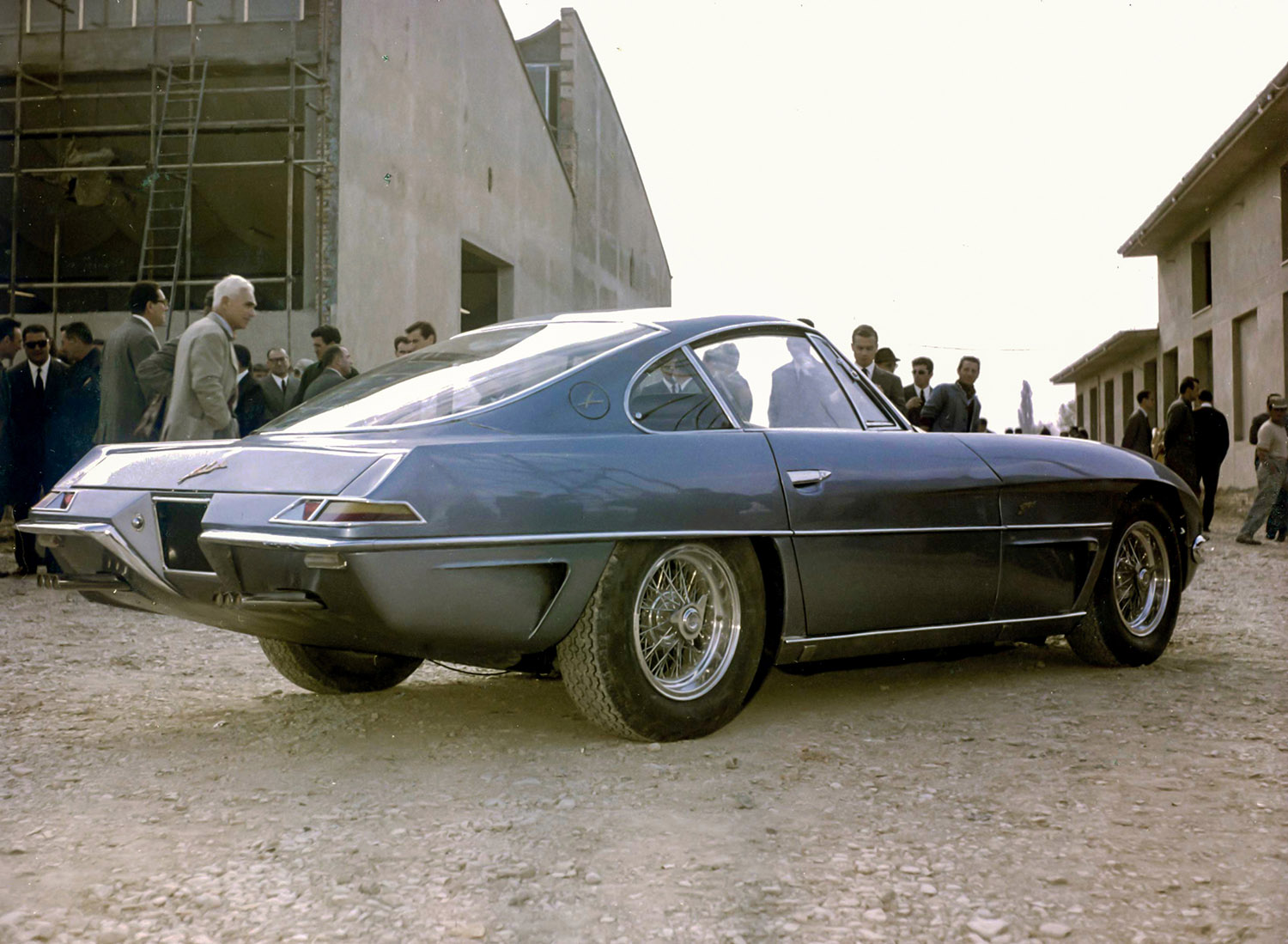
Alas, the rear didn’t reflect the theme of the front. Still, it was better than the Touring version…
Suddenly, that old ‘prototype’ looks even more interesting–it was the first time we had seen comprehensive photos of the car. Giampaolo (as spelled on the official Dallara website) Dallara and Bob Wallace worked hard to get the chassis and the Bizzarrini designed engine right. But on Ferruccio’s big day in Turin, when he sought to introduce a perfect GT car to compete in the same market as Ferrari (Sen recounts several versions of how and why Lamborghini wanted to best Ferrari) his baby fell flat. Very flat. So what happened?
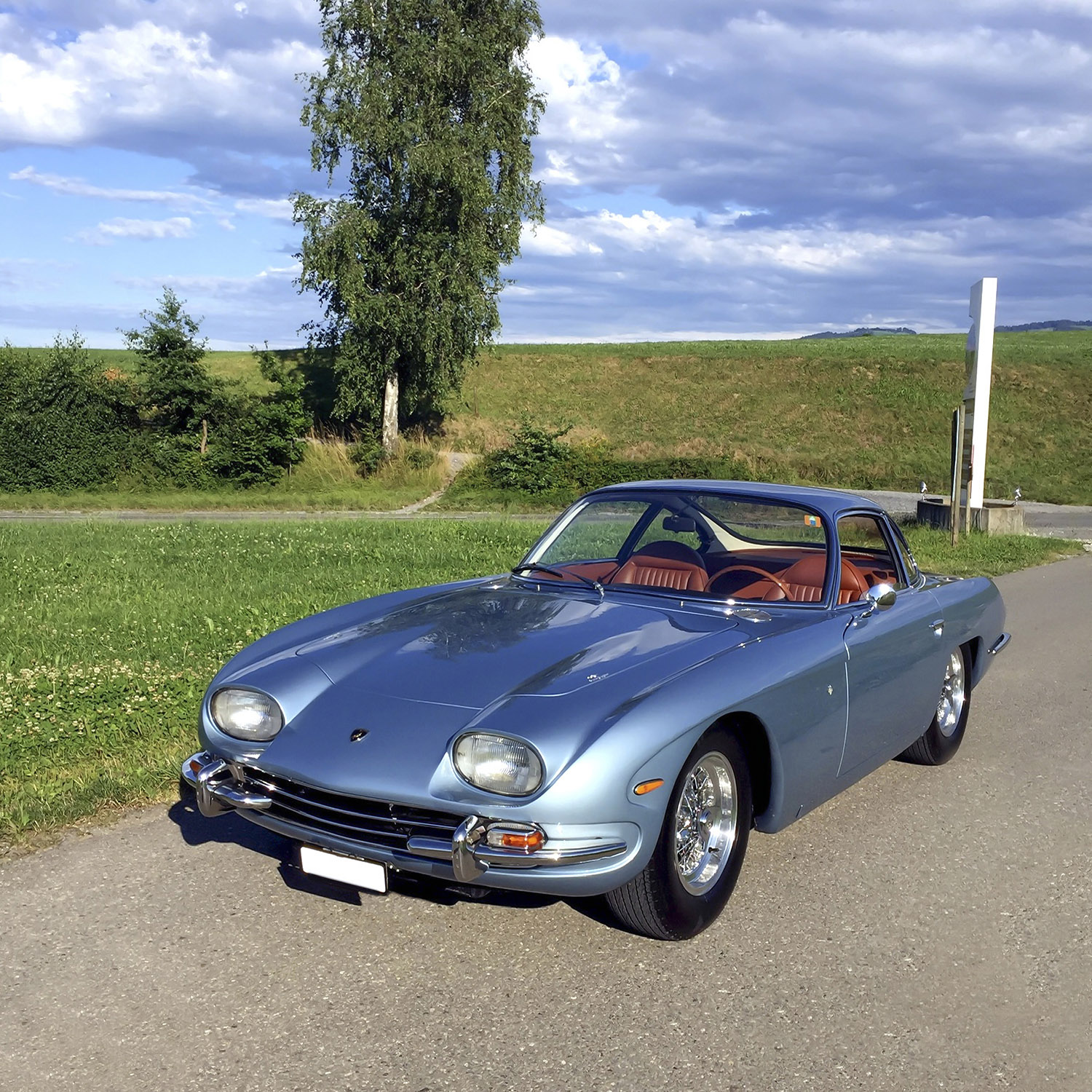
Sen makes note that Touring took the Scaglione design and changed the front and rear end treatments. Not for the better though. Touring, however, was able to get the 350GT into production and it became very successful, relatively speaking.
Sen’s research comes up with new information about the rejected Scaglione show car, who actually constructed the body, and he describes the difficulties faced when getting the car ready for the Turin premier. Shortly after the show, Touring Superleggera took Scaglione’s design to the production stage. But Touring’s interpretation of Scaglione’s design, introduced at Geneva in 1964, appeared to be dumbed down, smoothed out and it lost a great deal of character compounded by the use of those gawd awful oval headlights.
One Giant Leap for Autokind
It is hard to realize today just how advanced and unconventional the Miura was in every respect. From a rather prosaic 2+2 GT car, Ferruccio Lamborghini and Giampaolo Dallara and Paola Stanzani (interviewed by Kaare Byberg for the book) came up with Lamborghini number 2, the Miura, jumping from the 50s to the 80s in one gigantic leap for autokind. The Miura left everyone in the dust, including the 350 GT 2+2. Marcello Gandini, a young designer at Bertone who was to replace Giorgetto Giugiaro, was responsible for the body design. Of the Miura, Gandini said “It is a body with lots of muscles, but they are the muscles of a beautiful woman; it is wicked but with some gentle touches.” He was being modest.
Due to his previous two-volume work on the great designer, Sen had full access to Marcello Gandini, and is able to fill in details of the design development of not only the Miura, but all the Gandini-designed Lamborghinis that followed.
In an extended sidebar, Sen discusses the controversy of who borrowed what from whom as the Miura came to life, including the recollections of VeloceToday contributor Dick Ruzzin, who interviewed Nuccio Bertone about the changes made to the final design. At one point the departing Giorgetto Giugiaro was reported to have had an influence on the design as well, something which he denies. Sen investigates the sources of these stories. Our guess is that a Cryptomnesia He’s so Fine/My Sweet Lord scenario may have occurred.
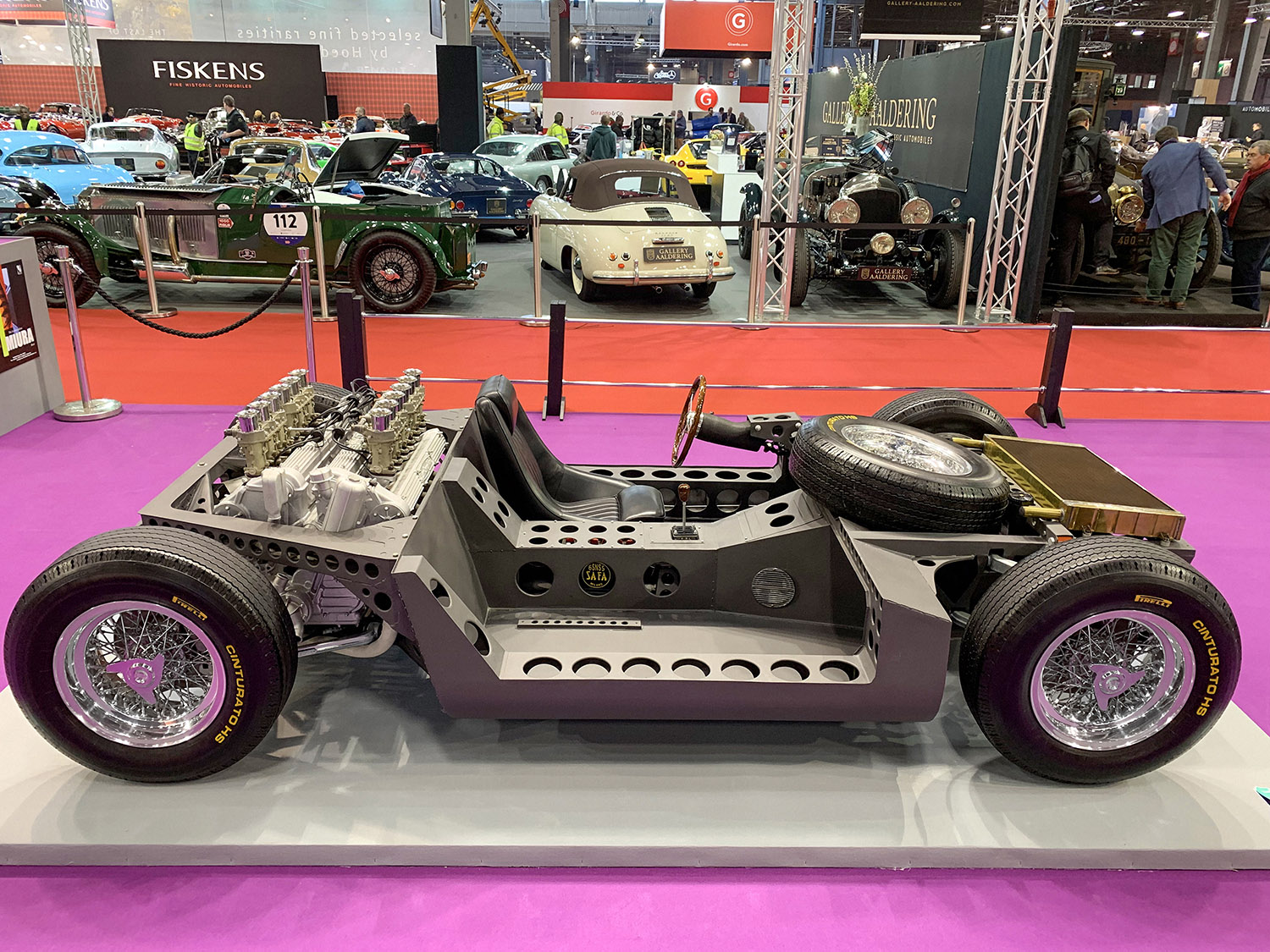
The chassis was a showstopper. Add the Gandini body and the Miura became one of the greatest supercars ever built.
On a personal note, for some reason this reviewer, while acknowledging the consensus that the Miura is one of the most beautiful, powerful, iconic automotive designs of all time, well, it fails to ring all the bells. But that might be due to too many bats in the belfry. Sen included an interesting shot of a Miura. Taken from behind, a high, ¾ view photo of a dark blue Miura puts a new perspective on the lines of the car while blending in the rear window slats which dominate the rear. What was merely striking is now beautiful. Sort like seeing that Scaglione 350GT again after many years. Bells rung.
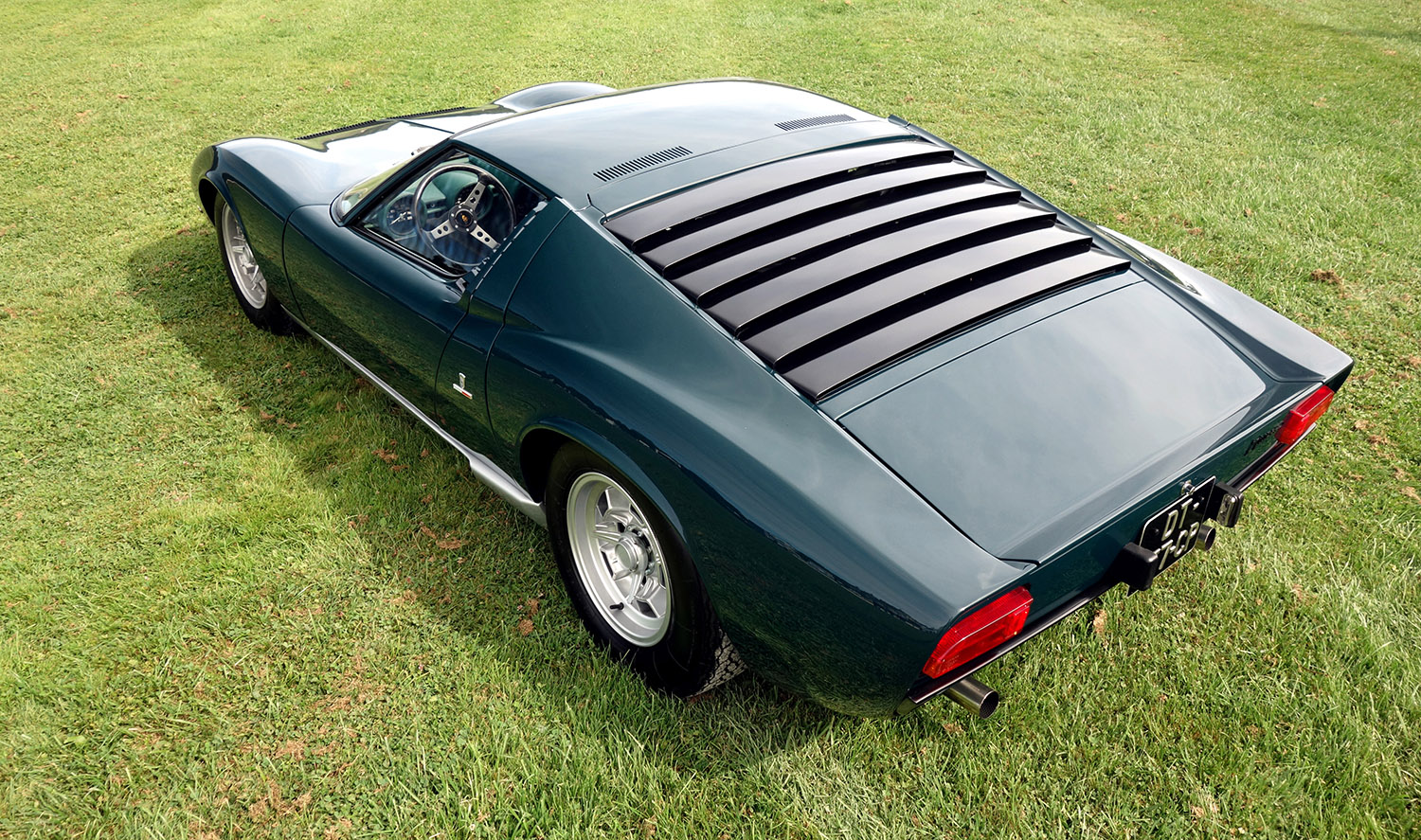
Colors and angles mean a great deal both in real time and in photography. This view of the Miura reveals a different, smoother side of Gandini’s creation. We note that the books contain many different photos and views of all the cars and allows the readers to better judge the design.
Impractical and Intoxicating: The Marzal
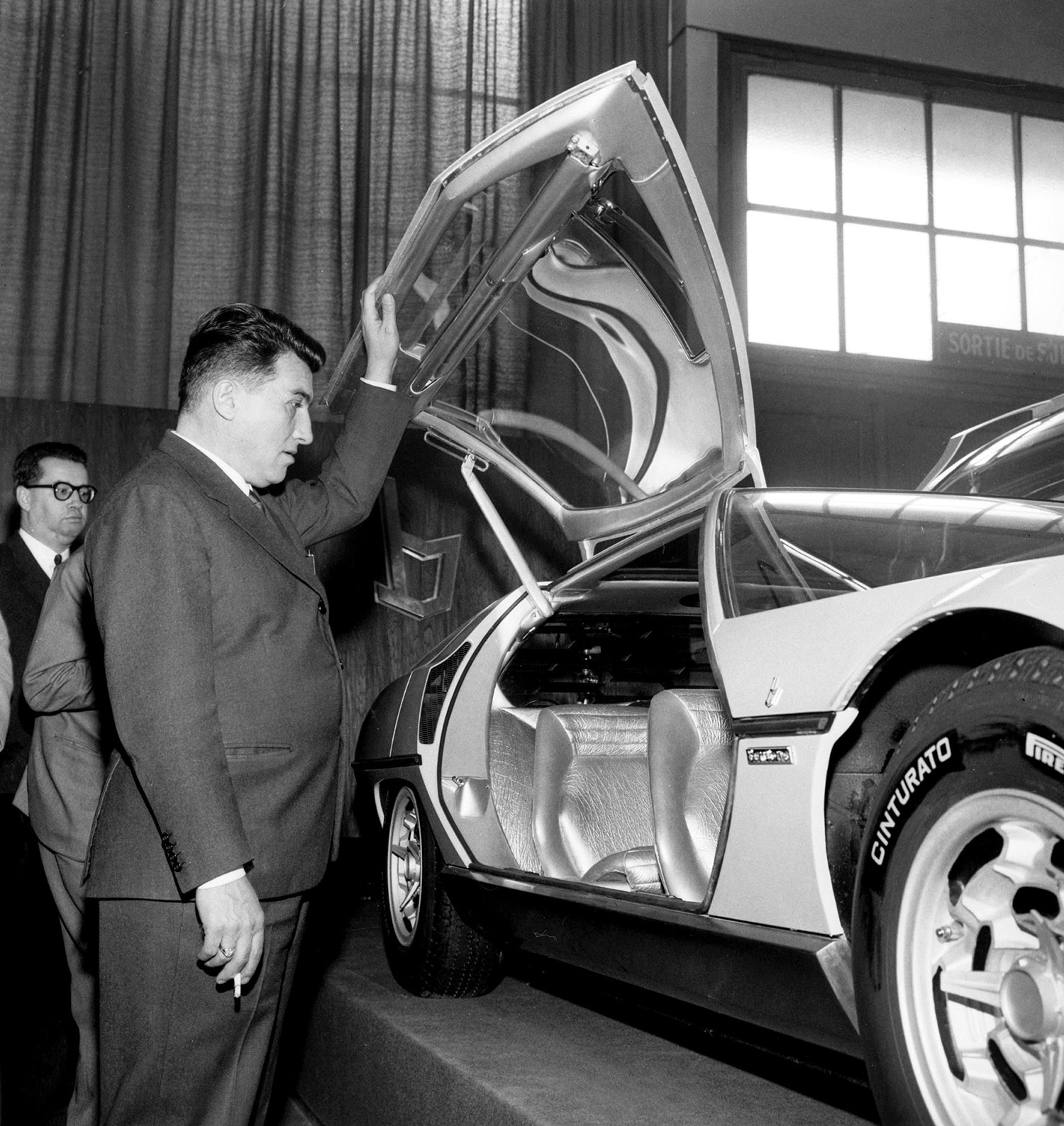
Ferruccio Lamborghini, with the ever-present cigarette, gazes upon Gandini’s and Bertone’s Marzal at the Geneva show. @ArchiviFarabola
Another new perspective came with Sen’s chapter on the Marzal. Seen here in some detail when the Bertone show cars were sold a few years ago, again Sen gives us detail, drawings, color and black and white illustrations to accompany his in-depth text. I found myself falling in love with a four-passenger, one-off vehicle that was so impractical it never made production.
With the Marzal the now famous hexagon design really came into Lamborghini fashion motif. But it was the sheer (pardon the pun) exuberance of the gull wing, all-glass doors, revealing to all, four we mean four seats, in what was actually two Miura chassis and half of a Miura engine. Yet this was not Lamborghini, this was Bertone and a harbinger of many magic things to come.
Dumbed Down 2: The Espada
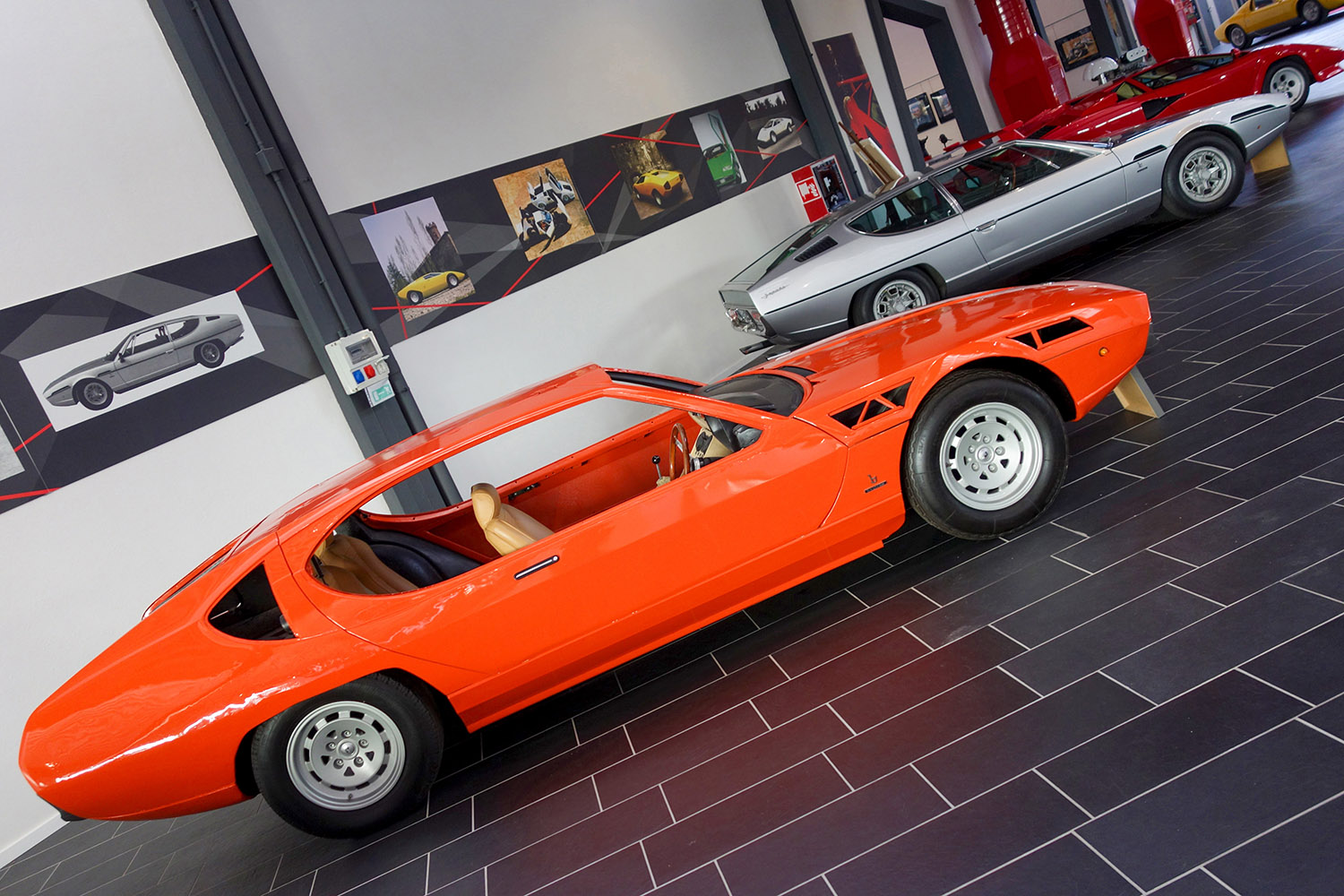
Did you know there was a Lamborghini junkyard at the factory? Tonino Lamborghini, Ferruccio’s son, rescued this prototype of the Espada and it is now in the Ferruccio Lamborghini museum. Gandini tried several different ways to adapt the Marzal concept and eventually ended up with the Espada, seen behind the red prototype.
The Marzal was Gandini Bertone; the Espada was Lamborghini via again, Gandini. Like the Touring 350 GT, the Espada was a dumbed down Marzal. In this case, out went the spectacular gullwing doors of the Marzal which were just too complex, and perhaps showed a bit too much at a time when kneecaps were being targeted and bullet proof glass was on the increase for subdued luxury sedans. But it was great, it was beautiful, it was a good seller. In our opinion however, the rear suffered. Think of the slim svelte beauty queen who with a few years gained weight in the wrong place (at least for a beauty queen), a fate shared with the Marzal but to a greater degree. The Marzal’s dramatic gullwings overwhelmed the sense of proportion, but the flaws were obvious in the more mundane Espada.
Lamborghini Astounds the World: The Countach
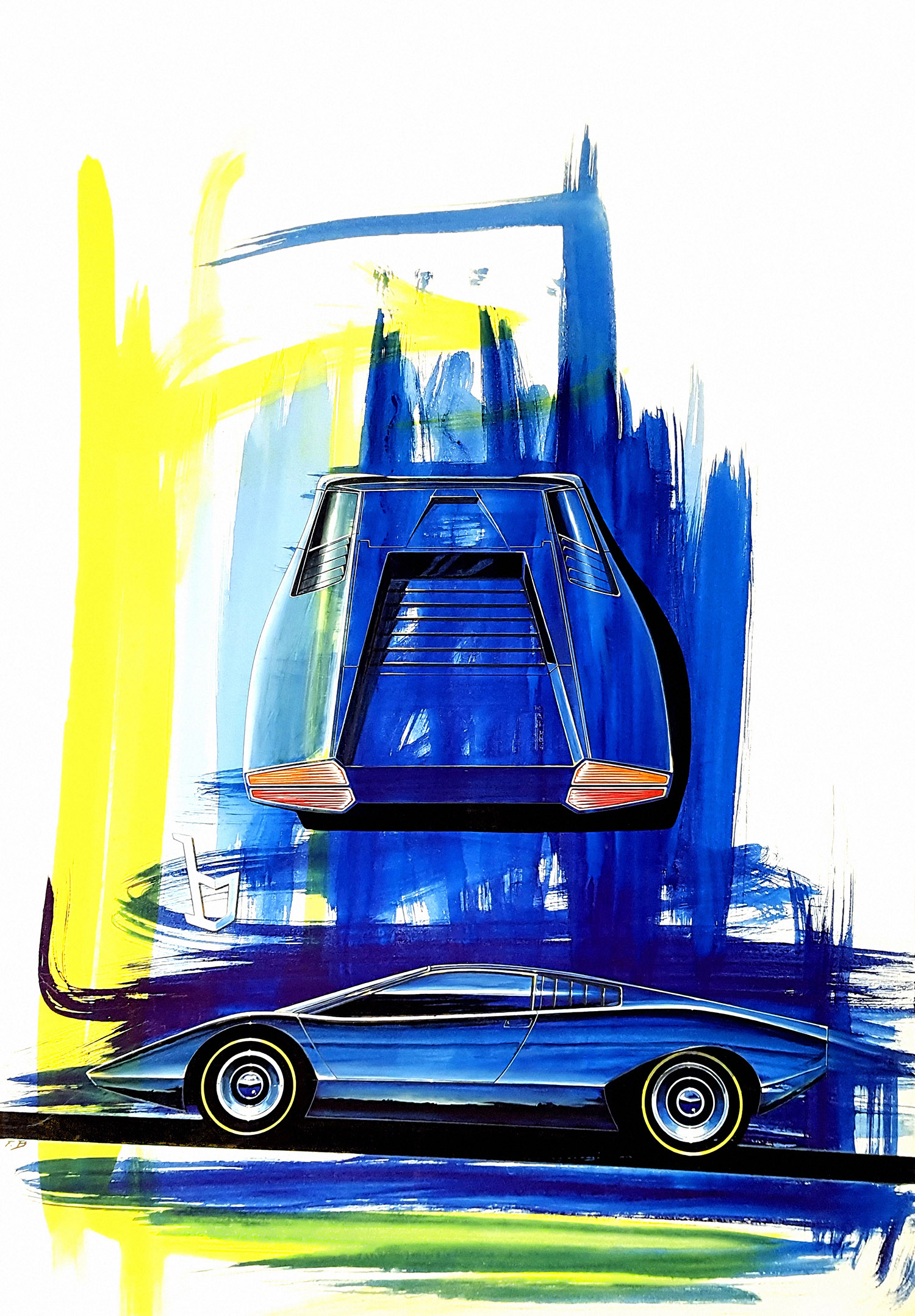
Fausto Boscariol worked with Gandini at Bertone, and did this artwork for publicity purposes. The volumes contain many such work of art including fold out inserts.
The dramatic but not particularly beautiful Countach was a continuation of the Gandini line, as developed by his many cars which led to this breakthrough production vehicle. It was the Miura of the 80s, and its predecessor was the Lancia Stratos Zero. It was a poster dream car for teenage boy’s rooms to hang next to Farrah Fawcett, and in real life, to be garaged by wealthy Arabs who had plenty of gas money (10 mpg) and roads to run it out. But it will never be forgotten.
Anecdotal Evidence
The authors also came up with interesting bits and pieces that we were not aware of. How about a four-door Espada, with very pleasing proportions despite the addition of two more doors. It never was built. Another rarity was the Lancomatic hydraulic suspension, offered on the Espada. Have you ever seen the Touring design proposal for the Miura? Bob Wallace modified more than just the Miura (resulting in the famous Miura Jota). There was a Jarama Bob and a Urraco Bob, both high speed one offs.
Odd man out during that era was the Islero. With Bertone and Gandini cranking out the stunning show cars, the Islero was to be a replacement for the 400 GT. But it was not designed by Gandini. It is handsome yet flawed, found few buyers, and was then replaced by the Gandini-penned Jarama. So, who was responsible for the Islero?
If we were permitted a criticism, it would be that although very necessary, contemporary magazine reports are perhaps used too widely. This resulted in a bit of repetition, often humorous. Six different magazines offered six different translations of the untranslatable word Countach; admiration, WOW, surprise, overtaking, Damn, and oh my god.
The End of Camelot
Sen wraps up Volume One with the 1970s, the now troubled firm having launched the Countach and the Urraco. The decade began with great hope and promise, but by 1978 Lamborghini was on its knees, having been sold by Ferruccio in 1972 to the Rosetti organization. (Stanzani said Rosetti was crazy. He thought that the cars should be crazy not the owners. Stanzani quit and his friends followed suit.) The Mimrams stepped in and then Chrysler.
But the designers were still the designers, and separate from the ailing Lamborghini concern. As we shall see in Volume 2, that would prove to be Lamborghini’s saving grace.
Order here!
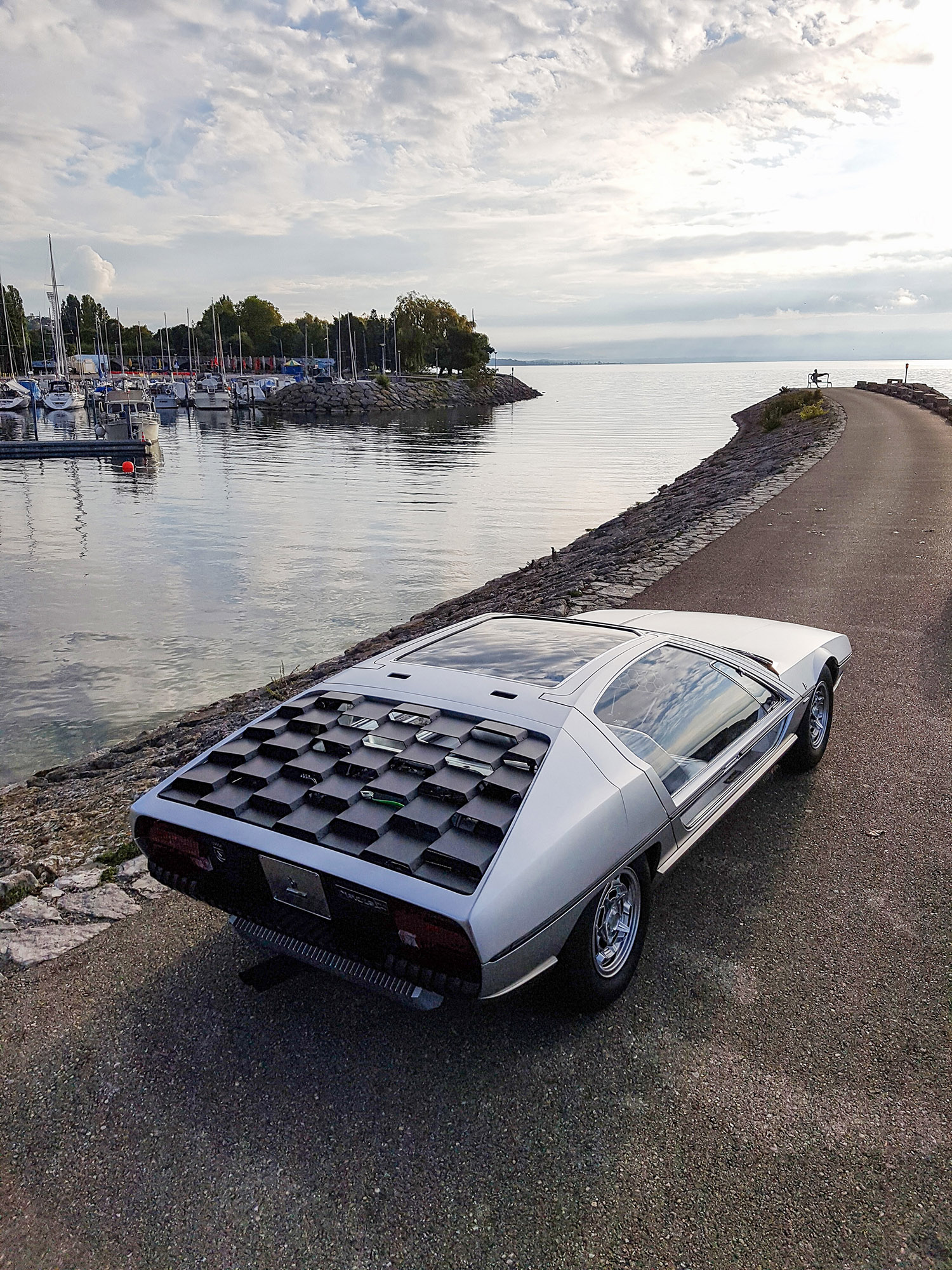
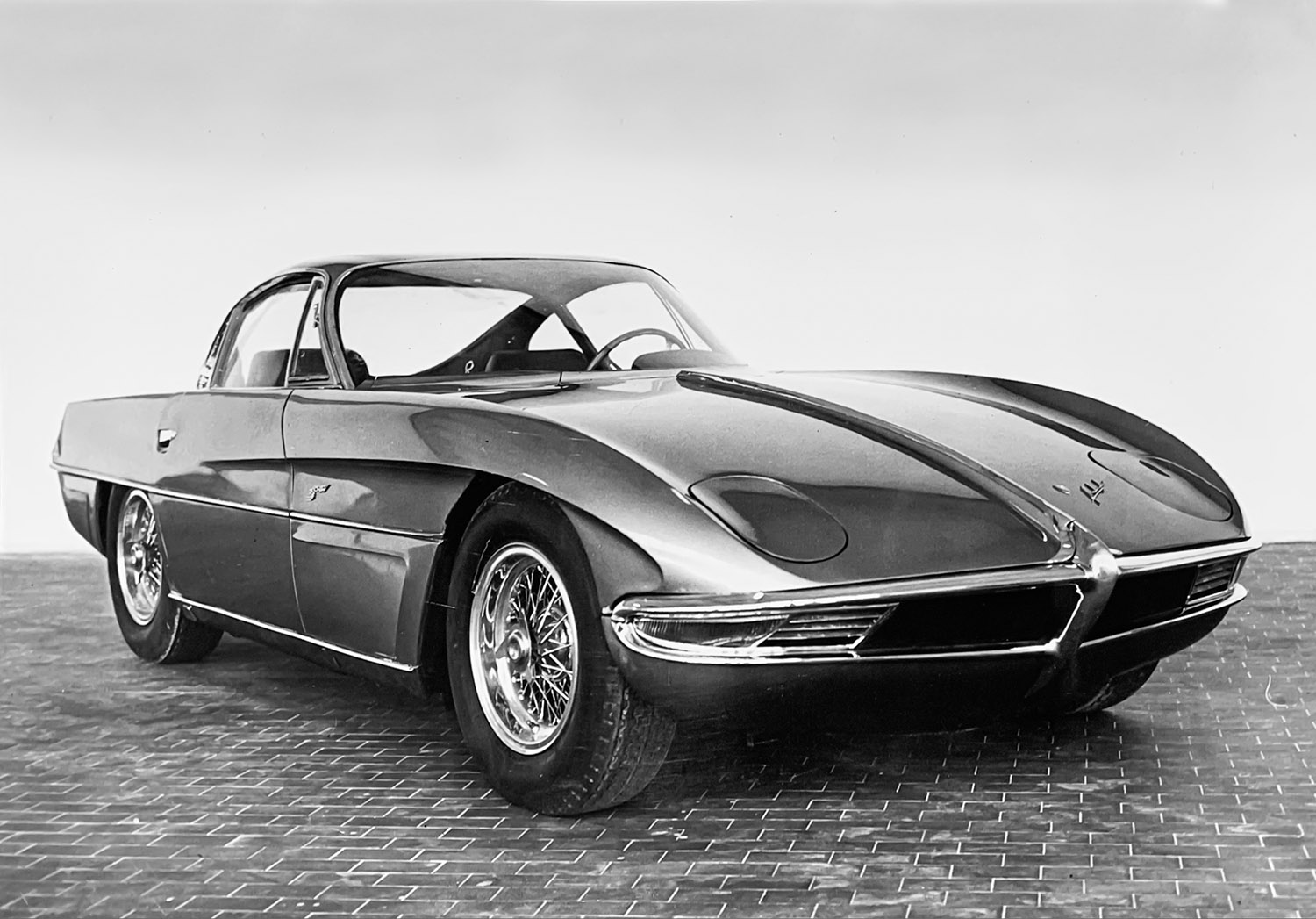
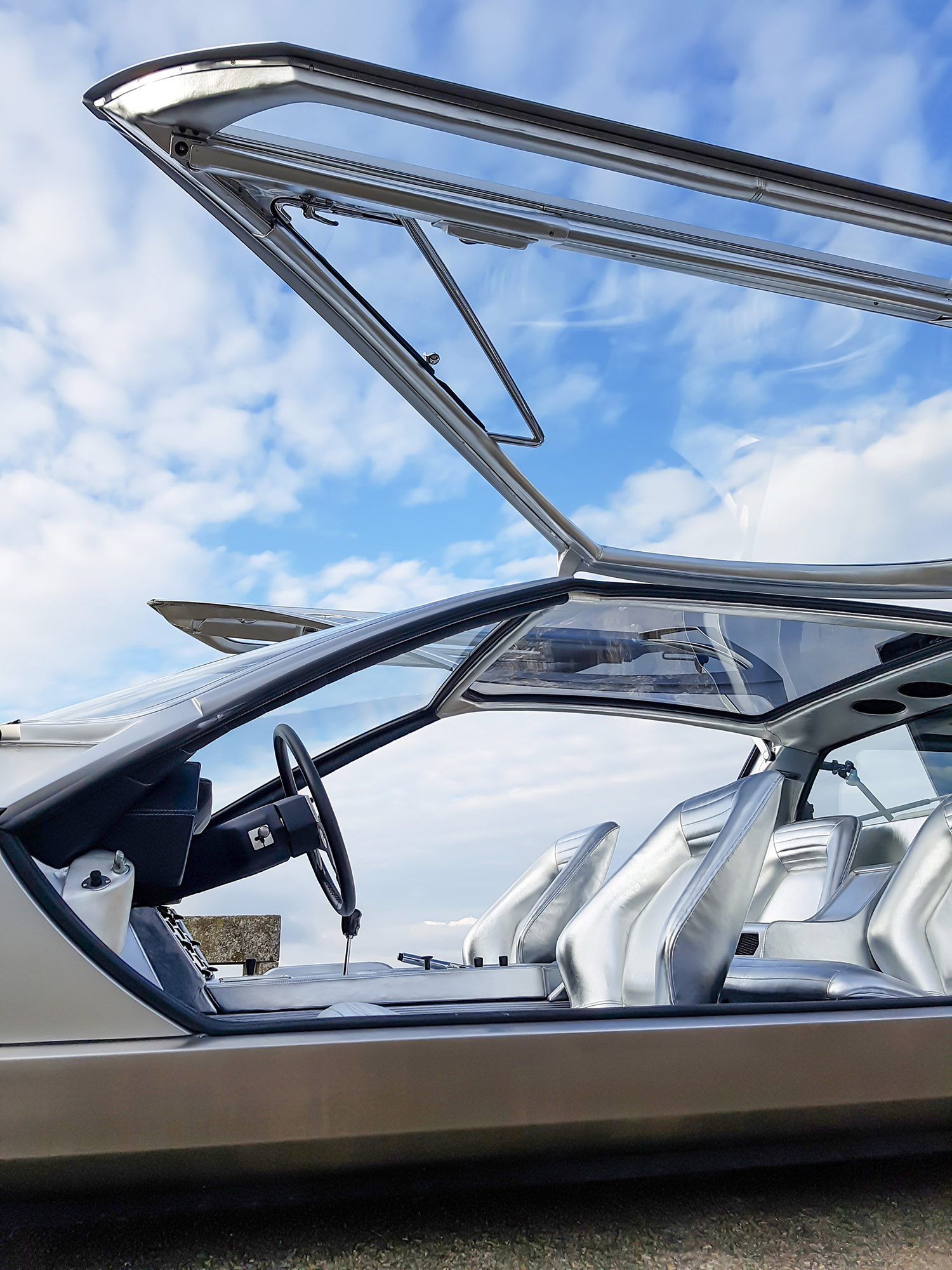

It looks like a fabulous book, I hope it is historically correct.
I was in Turin in 1971 at the Show when Nuccio Bertone presented the first Countack. It was matte day-glo orange with that big NACA duct on the side. It was small and gorgeous.
Does the book cover the Miura / Giugiaro controversy?
Every accomplished car designer can see that he was. The visual evidence is unmistakable.
DICK RUZZIN
i still get the same thrill as i did when i first saw the miura chassis. after 10 minutes of staring and kneeling and general peering from outside the ropes, bryan crow and i were invited onto the stand, where a nice gentleman said “would you like to make the contract?” i said yes immediately; i didn’t give a hoot what the body would eventually look like…
Dear Mr. Ruzzin, the orange car you saw at the 1971 Turin Show was the Stratos HF. The Countach was first shown in Geneva in March that same year.
Regarding the Gandini / Giugiaro controversy, the fact that Giugiaro left Bertone before the Miura chassis was first shown speaks for itself. The similarities between the Miura and the Testudo, i.e. the headlamp treatment and the door edge air intakes, were enforced by Nuccio in order to meet the Geneva Show deadline.
I hope you will enjoy the book – we had a great time making it.
Best regards,
Kaare Byberg.
Does anybody know about Detomaso with the Mimrams were part of the take over in receivership? I saw it on a video about Lamborghini but have not seen it mentioned anywhere else.
David